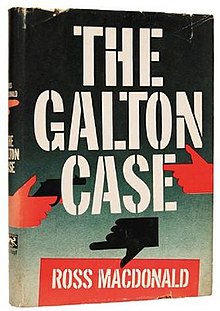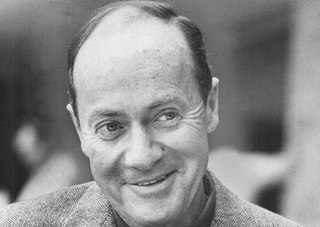
Ross Macdonald was the main pseudonym used by the American-Canadian writer of crime fiction Kenneth Millar. He is best known for his series of hardboiled novels set in Southern California and featuring private detective Lew Archer. Since the 1970s, Macdonald's works have received attention in academic circles for their psychological depth, sense of place, use of language, sophisticated imagery and integration of philosophy into genre fiction. Brought up in the province of Ontario, Canada, Macdonald eventually settled in the state of California, where he died in 1983.
Lew Archer is a fictional character created by American-Canadian writer Ross Macdonald. Archer is a private detective working in Southern California. Between the late 1940s and the early '70s, the character appeared in 18 novels and a handful of shorter works as well as several film and television adaptations. Macdonald's Archer novels have been praised for building on the foundations of hardboiled fiction by introducing more literary themes and psychological depth to the genre. Critic John Leonard declared that Macdonald had surpassed the limits of crime fiction to become "a major American novelist" while author Eudora Welty was a fan of the series and carried on a lengthy correspondence with Macdonald. The editors of Thrilling Detective wrote: "The greatest P.I. series ever written? Probably."
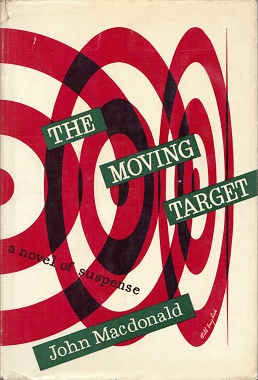
The Moving Target is a detective novel by writer Ross Macdonald, first published by Alfred A. Knopf in April 1949.

The Drowning Pool is a 1950 mystery novel by American writer Ross Macdonald, then writing under the name John Ross Macdonald. It is his second book in the series revolving around the cases of private detective Lew Archer and was published by Alfred A. Knopf in the US and in 1952 by Cassell in the UK.

Blue City is a thriller written in 1947 by Ross Macdonald. The novel was originally released under his real name, Kenneth Millar, by Alfred A. Knopf, while a condensed version was serialized in the August and September 1950 issues of Esquire.

The Way Some People Die is a detective mystery published, under the author's then pseudonym of John Ross Macdonald, by Alfred A. Knopf in 1951. It is Ross Macdonald's third book to feature his private eye Lew Archer. The plot centres on the activities of heroin-traffickers, a form of criminality which Macdonald particularly despised.
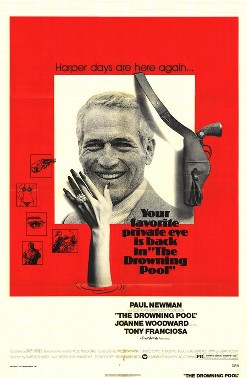
The Drowning Pool is a 1975 American mystery thriller film directed by Stuart Rosenberg, and based upon Ross Macdonald's novel of the same name. The film stars Paul Newman, Joanne Woodward, and Anthony Franciosa, and is a loose sequel to Harper. The setting is shifted from California to Louisiana.

Jerome Charyn is an American writer. With nearly 50 published works over a 50-year span, Charyn has a long-standing reputation as an inventive and prolific chronicler of real and imagined American life, writing in multiple genres.

Harper is a 1966 American mystery thriller film directed by Jack Smight from a screenplay by William Goldman, based on the 1949 novel The Moving Target by Ross Macdonald. The film stars Paul Newman as Lew Harper, with a cast that includes Lauren Bacall, Julie Harris, Arthur Hill, Janet Leigh, Pamela Tiffin, Robert Wagner and Shelley Winters.

The Doomsters is a 1958 mystery novel by American writer Ross Macdonald, the seventh book in his Lew Archer series.

Black Money is a novel by US American mystery writer Ross Macdonald. Published in 1966, it is among the most powerful of all Ross Macdonald's novels and was his own personal choice as his best book.
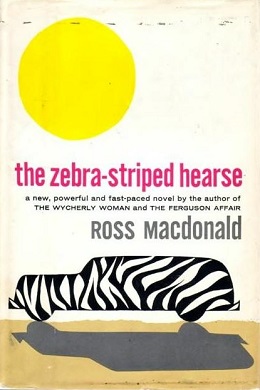
The Zebra-Striped Hearse is a detective novel written in 1962 by American author Ross Macdonald, the tenth book featuring his private eye, Lew Archer. The Coen Brothers wrote an as-yet-unproduced screenplay based on the novel for Joel Silver.
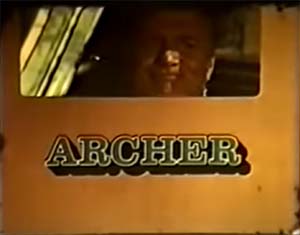
Archer is an American TV drama series that aired on NBC from January 30, 1975, to March 13, 1975. The show was based on the titular private-eye featured in the series of novels by Ross Macdonald.
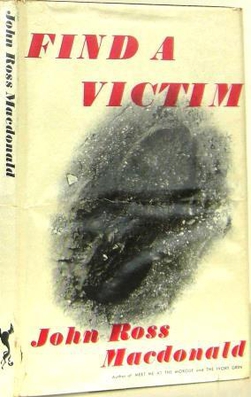
Find a Victim is a novel by Canadian-American author Ross Macdonald, the fifth in a series featuring detective Lew Archer. It was published as a Borzoi Book by Alfred A. Knopf in 1954 and mass marketed by Bantam Books in the following year. The first British hardback was published in Cassell & Company's Crime Connoisseur series in 1955, the same year that a French translation appeared as Vous qui entrez ici. At this period the author was writing under the name John Ross Macdonald and was also identified as Kenneth Millar on the Knopf dust jacket.

The Ivory Grin is Ross Macdonald's fourth Lew Archer detective novel, published in April 1952. Like most of Macdonald's, the plot is complicated and takes place mostly in out of the way Californian locations.

The Barbarous Coast is a 1956 detective novel by Canadian-American author Ross Macdonald, the sixth to feature private investigator Lew Archer and his eleventh novel overall. It was published by Alfred A. Knopf in hardcover, and by Bantam Books as a paperback. The plot follows Archer's attempt to locate a missing young woman who is associated with an upscale country club. The novel takes an acid view of Southern California society that foreshadows Macdonald's later treatment of cross-generational deterministic themes.
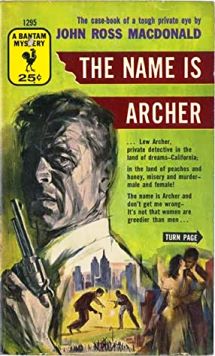
The Name Is Archer is a collection of short stories written by Ross Macdonald and featuring his detective hero, Lew Archer. Originally compiled in 1955 and published under the name John Ross Macdonald, more stories were added in later collections under different titles.
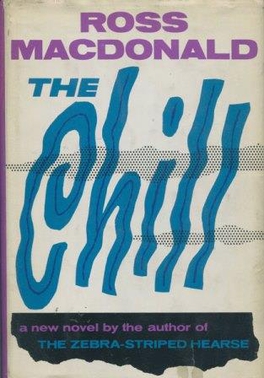
The Chill is Ross Macdonald's eleventh Lew Archer novel, published by Alfred A. Knopf in their Borzoi series in 1964. Macdonald's reputation was now growing and the front cover bore the announcement "a new novel by the author of The Zebra Striped Hearse", which had been well received. After the book was published by Collins Publishers in the UK that year, it went on to gain the Silver Dagger award for 1964 from the British Crime Writers Association. A French translation also appeared in 1964, followed by a Danish translation the following year and an Italian translation in 1967.

The Wycherly Woman is a detective novel by Ross Macdonald. The ninth to feature Lew Archer, it was published by Alfred A. Knopf in 1961. Earlier that year a condensed version had appeared in Cosmopolitan under the title "Take My Daughter Home". The novel was nominated for the 1962 Edgar Awards, and earlier included in Anthony Boucher’s best crime fiction list of 1961.

The Far Side of the Dollar is the 12th detective novel by Ross Macdonald to feature his private eye, Lew Archer. A condensed version was published by Cosmopolitan in 1964; in 1965 the full version appeared in the US from Alfred A. Knopf and in the UK from Collins Publishers.
